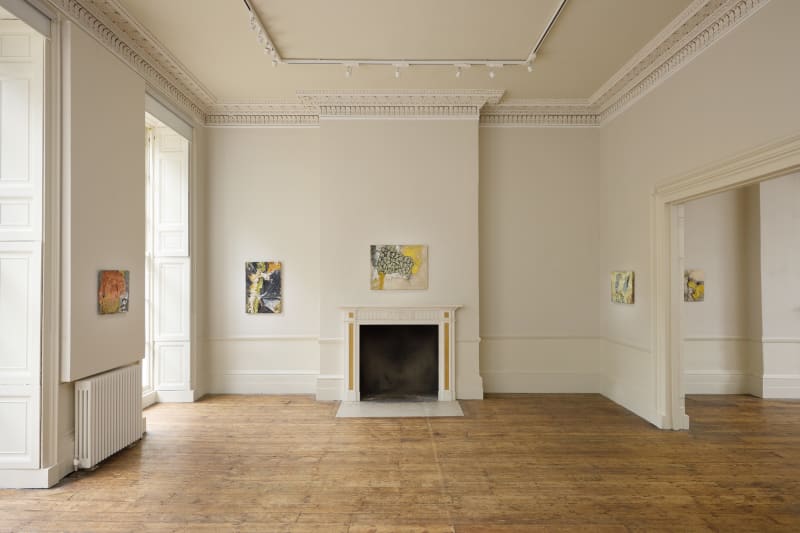Tristan Hoare Gallery is pleased to present Undercurrent, a new series of works by British artist Lydia Gifford, whose practice delicately negotiates the boundaries between painting and sculpture, form and feeling. Favouring the emotive, intuitive and spontaneous over the calculated.
Renowned for her deeply tactile and process-driven works, Gifford’s approach is rooted in materiality and the quiet drama of surface. The artist begins with the construction of a support; not just a canvas, but a foundational ground for her landscape to take shape. These structures become a ground for paint, but paint, in Gifford’s work, is not simply applied. It is pushed, scraped, and worked into the surface, layered and reformed. The act of painting becomes an excavation; of earth, emotion, and memory. Her bold use of colour, from bruised purples to deep reds and delicate blues, intensifies this sense of embodied contradictions.
Working predominantly in oil, Gifford resists the immediacy of fast-drying media in favour of the mutable, malleable nature of oil paint. “A lot of what I do is related to digging and earth,” she explains. “You can excavate it for days, weeks, months… and then you have to really respect the topography of it.” This commitment to slowness and physical engagement is visible in the surfaces of her works, which often retain the trace of each movement.
In Undercurrent, Gifford heightens the interplay between density and fragility, weight and lightness. The title suggests something hidden but persistent, a submerged rhythm that pulses beneath each composition. While the presence of drawing is not directly embedded into these works, its influence lingers in the immediacy of her mark-making and the graphic quality of her compositions. Oil pastel occasionally enters the conversation, but more often, the history of each work is written through the multi-layering and erasure.
Gifford’s paintings are marked by a raw, physical intensity that resists minimalism. Deeply expressive, they reflect intimate records of touch, tension, and time. These works offer a space for embodied looking, inviting the viewer to navigate uncertainty and reconnect with the subtle, complex textures of being.
